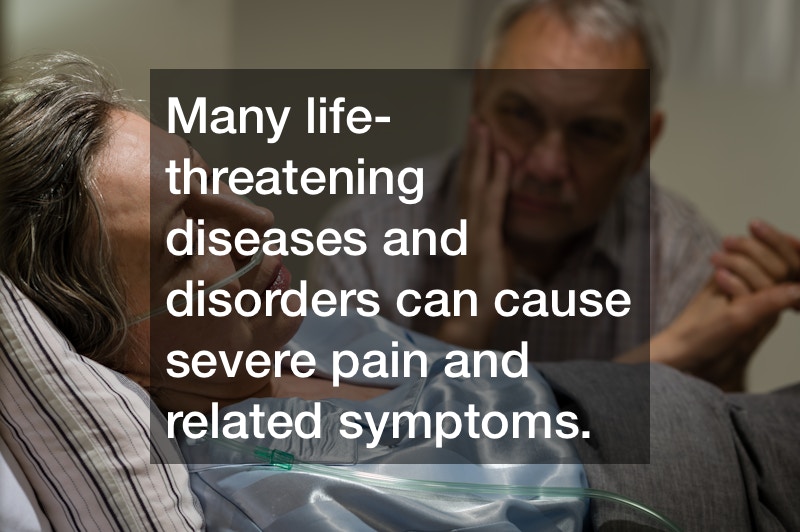Patients who are suffering from a terminal illness might need help in the meantime. Many life-threatening diseases and disorders can cause severe pain and related symptoms. The professionals who focus on palliative care can help treat those specific problems, even if they aren’t able to address the underlying medical condition itself. Patients might feel more relaxed while they stay at a center for acute hospice care.
It’s important to read as much as you can about the “elements of elder care hospice” that you can expect. You might not know how long one of your loved ones could need help from a palliative care doctors group. Some people will only stay there for a few weeks or even a few days. Other individuals will need assistance from a living care hospice for months. Terminal illnesses can progress relatively slowly, even though the prognosis might not truly change.
There are therapists who work with hospice centers. Patients often get therapy when they’ve first been diagnosed with a chronic or terminal condition. The people who didn’t receive therapy earlier might decide to get it after they’ve started staying at the hospice. These organizations can help patients get the emotional support that they need.
Hospice care, including nonprofit hospice care, can become necessary for a number of different reasons. For instance, nonprofit hospice care or another type of hospice care might become essential in cases of terminal illness, where only palliative care is being provided to the patient in question. For patients with advanced cancer that is deemed incurable and is resisting treatments, nonprofit hospice care or another type of hospice care might become part of the end of the life care plan that is devised.
In addition to this, older people can become in need of nonprofit hospice care (or another type of hospice care, depending on funds) as they age and lose some of their faculties, whether physically or mentally or both. And the elderly population is growing rapidly as the baby boomer generation continues to age. As a matter of fact, it’s actually been estimated that about one fifth of the entire population of this country will be at least at the age of 65 by the time that we reach the year of 2030, now just a mere 11 or so years in the future. And this aging population will have a number of medical needs, sometimes that of nonprofit hospice care.
Hospice care can be ideal for those who have declined mentally as well as physically, even in cases of nonprofit hospice care. After all, hospice physician services deal with patients with mental decline quite frequently, as this becomes the reality for much of the elderly population as they age. In fact, it’s even been estimated that at least 15% of the elderly population has a diagnosable brain health disorder, oftentimes including dementia (such as Alzheimer’s disease but certainly not limited to it, as there are up to 100 known types of dementia able to be diagnosed here in the United States).
Unsurprisingly, the hospice population itself has been found to be on the rise, sometimes quite considerably. Back almost 20 years in the year of 2000, for example, there were just over half of a million hospice care recipients here in the United States. Nowadays, however, this number has risen considerably. By the time that we reached the year of 2015, for instance, the number of hospice patients, including those who were receiving nonprofit hospice care, had grown to total very nearly one and a half million people. In the few years that have followed since, this number has only continued to grow – and is only likely to keep growing in the years that are to come as well.
What services, though, does nonprofit hospice care provide (or for profit hospice care, for that matter)? Typically, hospices are a good solutions for people who are no longer able to fully care for themselves, be it due to old age, illness, or injury (or a combination of all three, in some cases). Hospice centers can provide the full time care that someone might need, either as they grow older or as whatever illness they might have been diagnosed with continues to progress.
Here in the United States however, hospice services can be difficult to pay for, especially for those who are already struggling with money. Fortunately, medicare can help to get people into nonprofit hospice care here and all throughout the country, and this nonprofit hospice care can improve just about any patient’s quality of life significantly if the nonprofit hospice care is really and truly needed. And more people are enrolled in medicare than ever, something that is, again, only likely to continue climbing as the elderly population of this country swells rapidly in the next coming years.
As a matter of fact, the data that has been gathered on the subject more than supports this claim, showing that up to 58 million people had been enrolled in medicare by the time that we had reached the April of 2017, which is now almost two years in the past. Fortunately, nonprofit hospice care has been steadily on the rise, allowing for more and more medicare recipients to take advantage of the hospice care services that they are so very much in need of here and all throughout the country as a whole.


